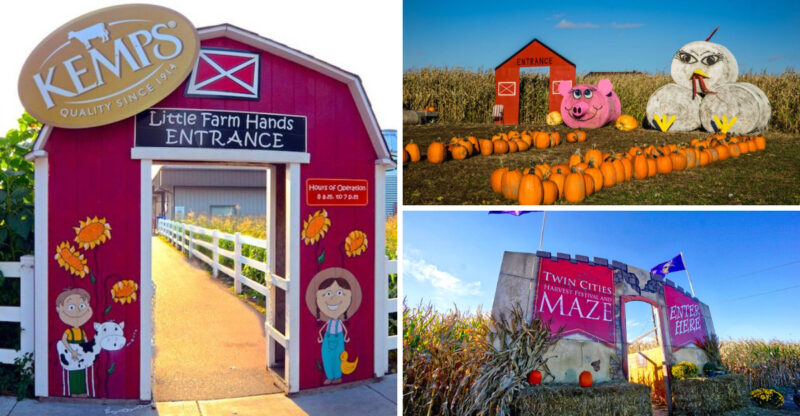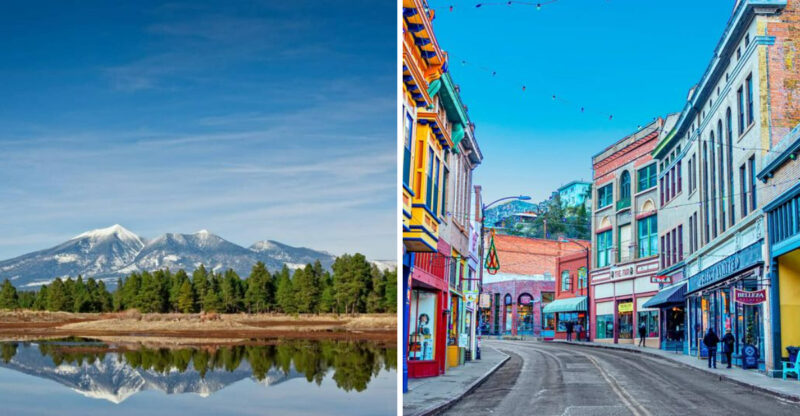26 Unforgettable Colorado Adventures Recommended By Someone Who Lives There
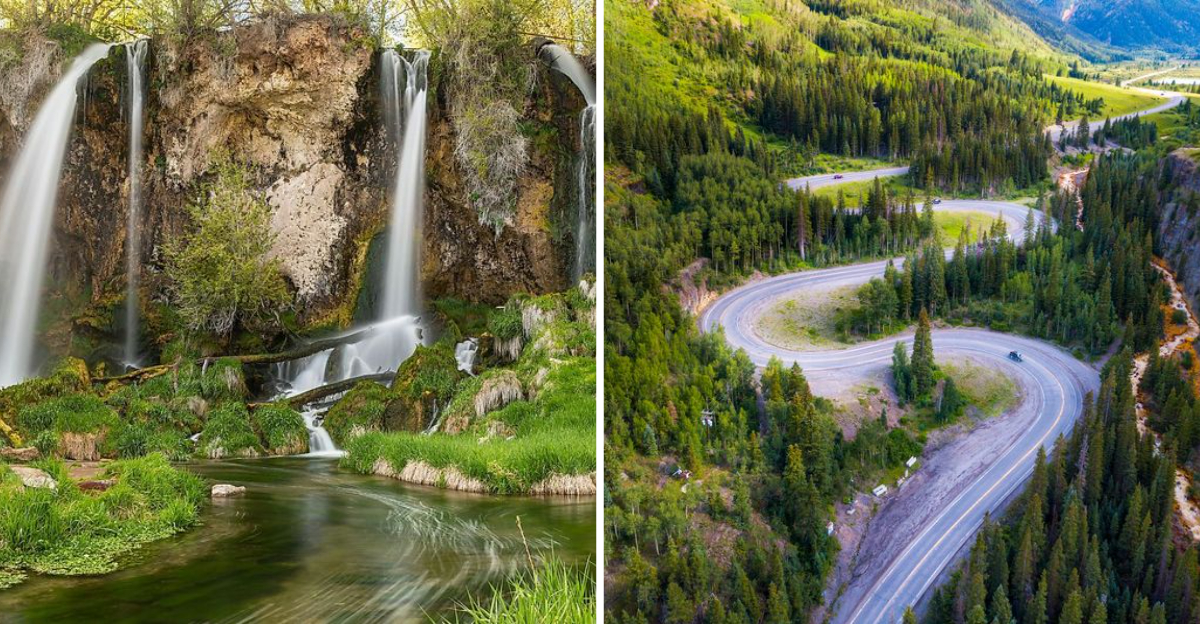
Colorado has always been my home, and I can tell you firsthand that this state offers some of the most incredible adventures you’ll ever experience. From towering mountains to red rock formations, rushing rivers to endless sand dunes, there’s something here for every type of adventurer.
I’ve put together this list of 26 unforgettable experiences that will help you discover why Colorado is truly one of the most amazing places on Earth.
1. Hanging Lake Trail
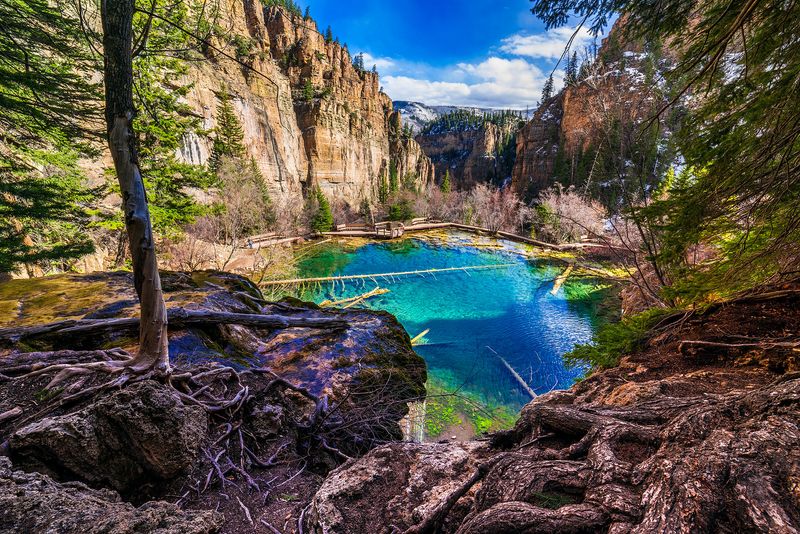
When you reach the top of this challenging trail, you’ll understand why it’s one of Colorado’s most treasured natural wonders. The 1.2-mile hike gains over 1,000 feet in elevation, making it steep and demanding, but the reward is absolutely worth every step.
Crystal-clear turquoise water fills a delicate travertine lake that seems to defy gravity as it hangs on the edge of Glenwood Canyon. Waterfalls cascade over moss-covered rocks, creating a scene so beautiful it almost doesn’t seem real. You’ll need to reserve your permit in advance because this fragile ecosystem is carefully protected.
Bring plenty of water and start early to avoid afternoon crowds and heat.
2. Maroon Bells Scenic Area
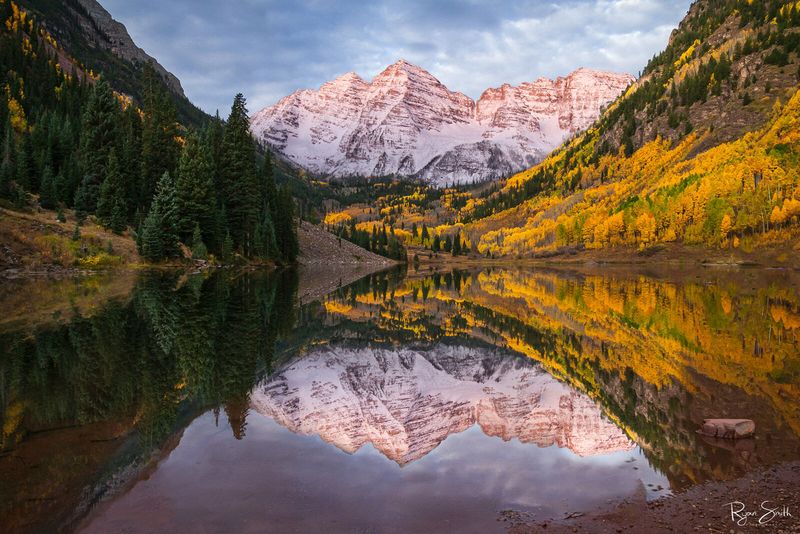
These twin peaks are hands-down the most photographed mountains in North America, and once you see them, you’ll grab your camera too. Rising nearly 14,000 feet into the sky, the Maroon Bells create a mirror image in the alpine lake below that takes your breath away.
Fall brings golden aspen trees that contrast beautifully with the reddish-purple mountain faces. You can hike several trails around the area, from easy lakeside walks to challenging climbs. Getting there requires either taking a shuttle bus or arriving very early in the morning before vehicle restrictions begin.
I recommend visiting during sunrise when the light paints the peaks in warm colors.
3. Garden of the Gods
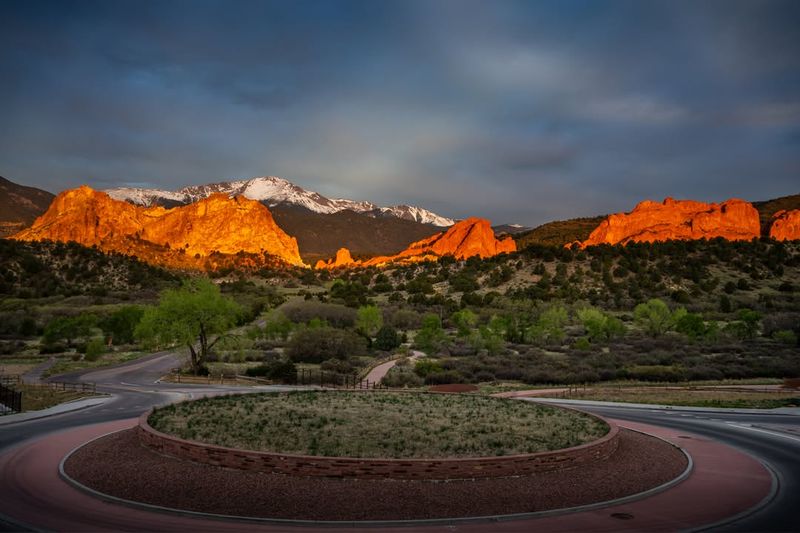
It’s hard to believe this incredible park is completely free to visit and explore. Massive red sandstone formations jut dramatically from the ground, creating shapes that look like ancient sentinels guarding the landscape. Pike’s Peak provides a stunning snow-capped backdrop that makes the red rocks pop even more.
You can hike, bike, or even ride horses through the park on over 15 miles of trails. Rock climbers from around the world come here to scale the challenging formations. The Visitor Center offers fascinating information about the geology and history of this registered National Natural Landmark.
Sunset here is magical when the rocks glow bright orange.
4. Great Sand Dunes Sandboarding
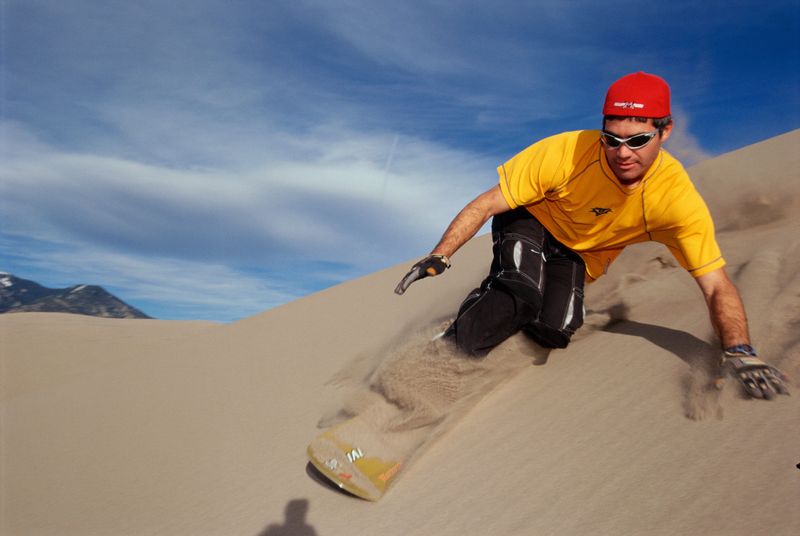
Picture the tallest sand dunes in North America rising 750 feet high against a backdrop of snowy mountain peaks. This surreal landscape lets you try sandboarding or sand sledding, which feels like snowboarding but on warm sand instead of cold snow.
You can rent boards at nearby shops or bring your own waxed sleds for the best glide. The climb up the dunes is exhausting but sliding down at high speed makes it totally worthwhile. Medano Creek flows at the base of the dunes in late spring, creating a natural beach where kids can splash and play.
Visit in early morning or late afternoon to avoid scorching sand temperatures.
5. Royal Gorge Bridge
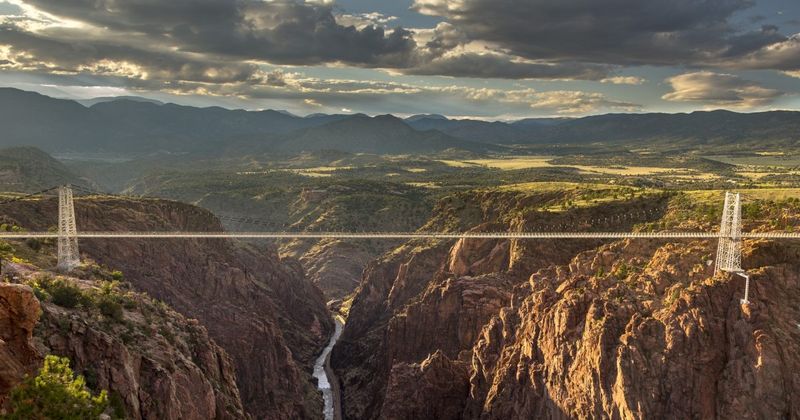
Walking across a bridge suspended 956 feet above the Arkansas River gets your heart pumping in the best way possible. This engineering marvel held the record as the world’s highest suspension bridge for decades, and the views from the middle are absolutely dizzying.
The park surrounding the bridge offers zip lines, a gondola ride across the gorge, and a historic incline railway. You can look straight down through the wooden planks to see the river far below. The bridge sways slightly in the wind, adding to the thrilling experience.
If heights make you nervous, the gondola offers incredible views without the walking challenge across the span.
6. Rocky Mountain National Park

Over 400 square miles of pristine wilderness make this park an absolute must-see during any Colorado visit. Trail Ridge Road, which crosses the park, is the highest continuous paved road in North America, reaching over 12,000 feet in elevation.
You’ll spot elk, bighorn sheep, moose, and countless other wildlife species in their natural habitat. More than 350 miles of hiking trails range from easy lakeside strolls to challenging mountain climbs. Alpine lakes reflect towering peaks, and wildflowers carpet the meadows in summer.
Arrive before 9 AM during peak season because parking lots fill up quickly and the park implements timed entry reservations.
7. Pikes Peak Summit

America the Beautiful was written after a trip to this 14,115-foot summit, and you’ll understand the inspiration once you see the view. You can drive up the Pikes Peak Highway, take the cog railway, or hike the challenging Barr Trail to reach the top.
The air is thin at this elevation, containing about 40% less oxygen than at sea level, so take it easy and drink plenty of water. The famous summit donuts, available at the top, taste even better at high altitude. On clear days, you can see into Kansas and New Mexico from the peak.
Weather changes rapidly here, so bring warm layers even on summer days.
8. Mesa Verde Cliff Dwellings

These 700-year-old cliff dwellings will transport you back in time to when the Ancestral Pueblo people called these stone structures home. Built directly into the sides of canyon walls, the dwellings showcase incredible engineering and architectural skills that still impress modern visitors.
Cliff Palace, the largest dwelling, contains over 150 rooms and required climbing ladders to access different levels. Ranger-guided tours let you actually climb into some dwellings and explore the rooms where families lived, cooked, and stored food. The museum provides context about the culture and mysterious departure of these ancient inhabitants.
Tours book up fast during summer, so reserve your tickets several weeks ahead.
9. Black Canyon of the Gunnison
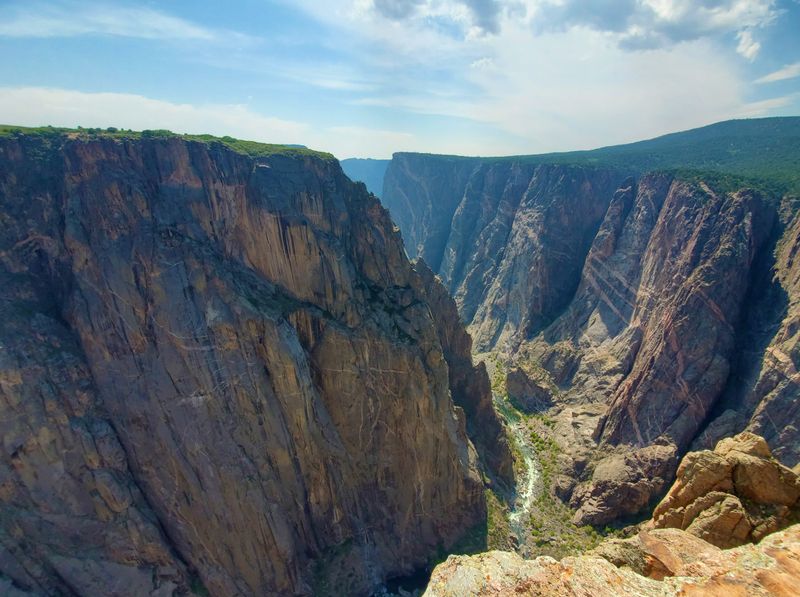
This canyon plunges over 2,700 feet deep in places, with walls so steep and narrow that sunlight only reaches the bottom for a few minutes each day. The dark Precambrian rock, some of the oldest exposed rock in North America, gives the canyon its name and creates an ominous, dramatic appearance.
Several overlooks along the rim provide heart-stopping views down into the abyss where the Gunnison River carves through solid rock. The narrowest section is only 40 feet wide at the river level while being 1,100 feet deep. Experienced climbers tackle the sheer walls, but most visitors stick to the safe overlooks.
Bring binoculars to spot rock climbers on the walls and birds soaring below the rim.
10. Durango-Silverton Narrow Gauge Railroad
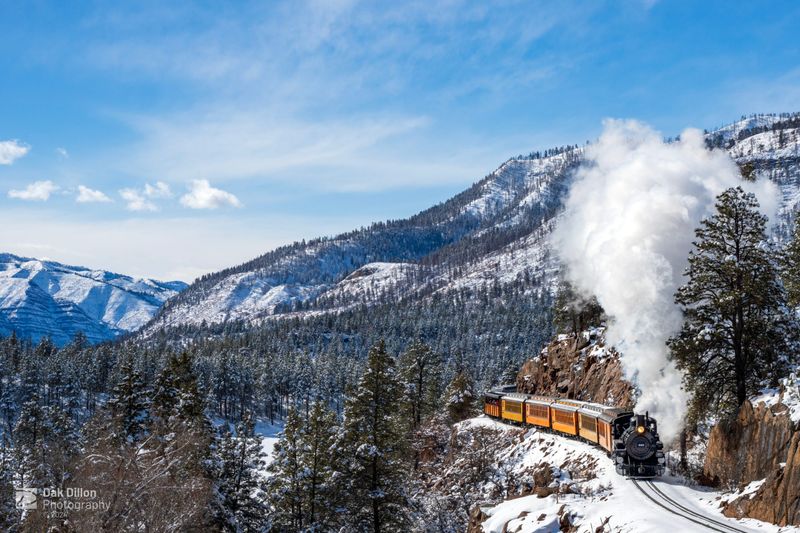
Riding behind a coal-fired steam locomotive through the San Juan Mountains feels like stepping into an old Western movie. This historic train has been running since 1882, originally built to haul silver and gold ore from the mountains.
The 45-mile journey takes you through breathtaking canyons and along cliff edges where the tracks seem to hang in mid-air. You’ll follow the Animas River through terrain that’s inaccessible by car, seeing waterfalls and wildlife from vintage passenger cars. The train chugs along at a leisurely pace, giving you plenty of time to soak in the scenery.
Book the open-air gondola cars for the best photo opportunities and fresh mountain air experience.
11. Red Rocks Amphitheatre
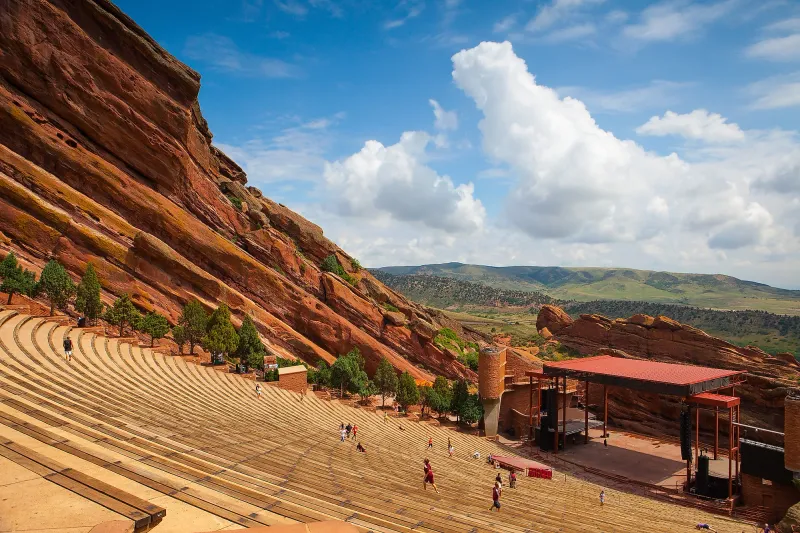
Mother Nature created the world’s most perfect outdoor concert venue when she positioned these massive red sandstone formations. The natural acoustics are so incredible that musicians and bands from around the globe dream of performing here.
You can visit for free during the day to walk the stairs, work out, or simply admire the stunning geology. The rocks tower 300 feet above the stage, and the seating area fits nearly 10,000 people. Even if you’re not catching a concert, the sunrise yoga sessions and film screenings make this place special year-round.
Climb all the stairs for a serious workout with amazing views of Denver’s skyline in the distance.
12. Colorado National Monument

Towering monoliths, deep canyons, and unique rock formations make this monument feel like a hidden gem that not enough people know about. Located near Grand Junction, this area showcases the dramatic desert landscape of western Colorado.
Rim Rock Drive winds for 23 miles through the monument, offering pullouts with spectacular canyon views at every turn. You can spot bighorn sheep, golden eagles, and desert wildlife adapted to this harsh but beautiful environment. Several hiking trails let you get up close to the formations or descend into the canyons.
Independence Monument, a 450-foot stone pillar, is the park’s most iconic feature and looks especially stunning during golden hour before sunset.
13. Mount Evans Scenic Byway
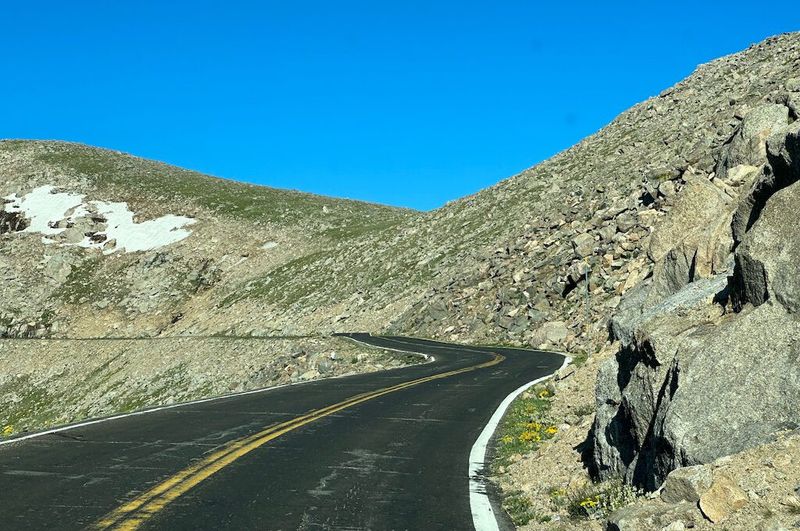
How many places let you drive your regular car to the top of a 14,000-foot mountain? This highest paved road in North America takes you from evergreen forests through alpine tundra to the summit of Mount Evans.
Mountain goats often wander right up to the road, seemingly unbothered by visitors snapping photos. The landscape changes dramatically as you climb, transitioning from thick forests to twisted bristlecone pines to barren rocky terrain above treeline. Echo Lake makes a perfect stop halfway up for picnicking and short hikes.
The road typically opens in late May and closes by early October due to snow, so check conditions before making the trip up.
14. Glenwood Hot Springs Pool
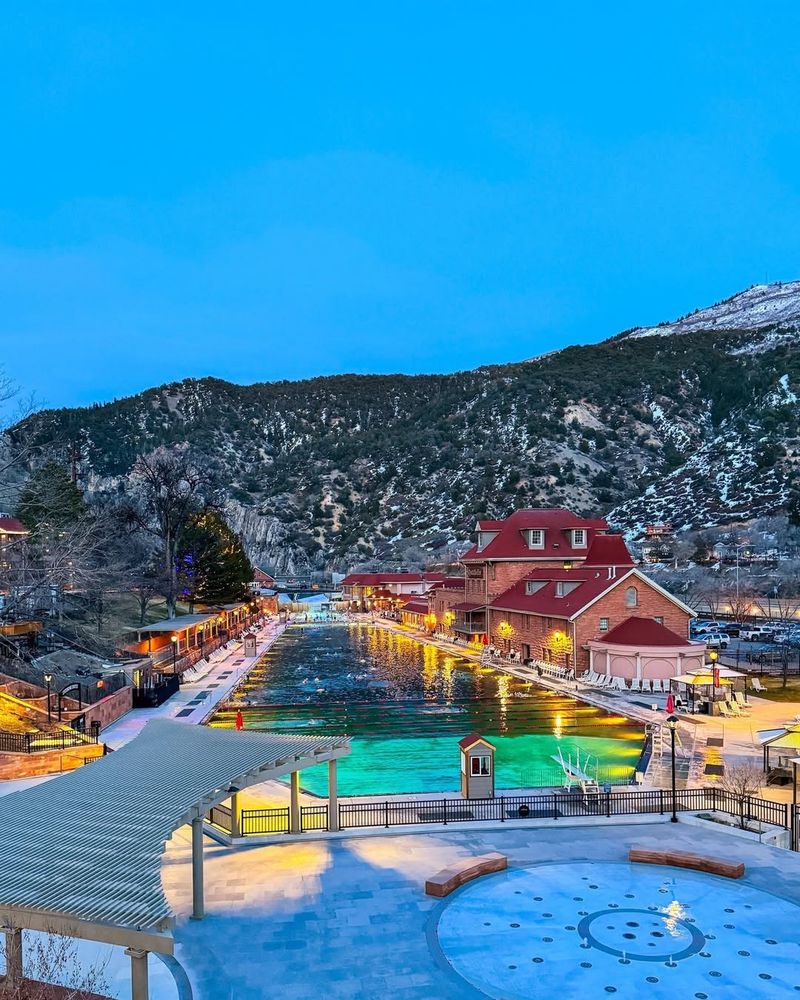
Soaking in naturally heated mineral water while surrounded by mountains is pure Colorado bliss. This pool stretches over two blocks long, making it the largest hot springs pool in the world, and maintains a comfortable temperature year-round.
A smaller therapy pool reaches 104 degrees, perfect for relaxing sore muscles after hiking. Steam rises off the water on cold winter days, creating a magical atmosphere when snow falls around you. The springs have been attracting visitors since the 1880s, including famous historical figures and presidents.
Visit during winter evenings when the contrast between hot water and cold air creates the most memorable experience, and fewer crowds mean more space.
15. Breckenridge Skiing
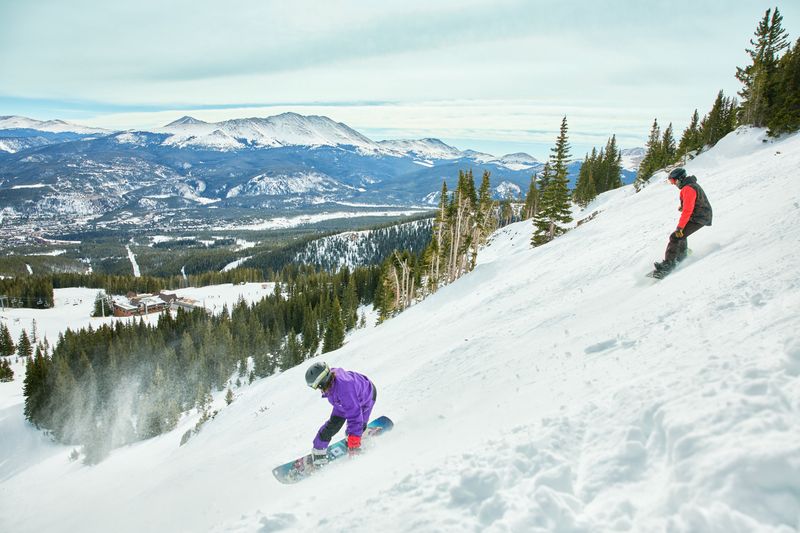
Living in Colorado means having access to world-class skiing, and Breckenridge consistently ranks among the best resorts in the state. With over 2,900 acres of skiable terrain spread across five peaks, there’s something here for every skill level.
The charming Victorian town at the base offers incredible restaurants, shops, and nightlife after you finish on the slopes. Peak 6 provides expert terrain with challenging bowls and steep runs. Beginners have plenty of gentle slopes to learn on, while terrain parks keep snowboarders and freestyle skiers entertained.
The town sits at 9,600 feet elevation, so give yourself time to adjust before hitting the harder runs or you’ll tire quickly.
16. Trail Ridge Road
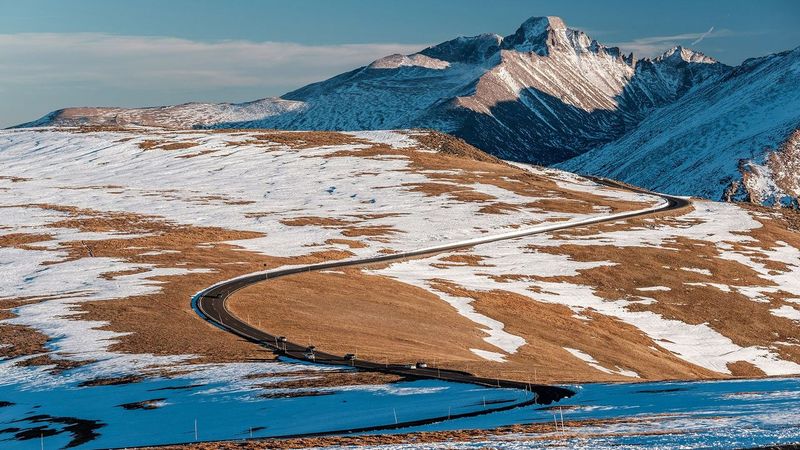
Driving above treeline for miles on end gives you a perspective on Colorado’s high country that few roads can match. This route through Rocky Mountain National Park reaches 12,183 feet at its highest point, making it the highest continuous paved road in the country.
You’ll travel through multiple ecosystems in a single drive, from montane forests to subalpine meadows to arctic tundra. Elk and bighorn sheep graze alongside the road, and marmots sun themselves on the rocks. Numerous pullouts let you stop for photos and short walks on the tundra.
The road closes from mid-October through late May due to snow, and afternoon thunderstorms are common in summer, so start your drive early.
17. Telluride Gondola Ride

This free gondola system is the only one of its kind in the United States, connecting the town of Telluride with Mountain Village high above. Riding in the enclosed cabins gives you spectacular views of the box canyon, waterfalls, and surrounding peaks without any cost.
The 13-minute ride climbs over 2,000 vertical feet, showcasing the dramatic terrain that makes Telluride special. You can ride up for sunset dining at mountain restaurants or simply enjoy the views and ride back down. Winter brings skiers using it as resort transportation, while summer hikers use it to access high-elevation trails.
Time your ride for sunset when the alpenglow lights up the mountain faces in pink and orange hues.
18. Dinosaur National Monument

Seeing real dinosaur bones still embedded in the rock where they were discovered is absolutely mind-blowing. The Quarry Exhibit Hall preserves over 1,500 fossils in the rock face, creating a window into life from 149 million years ago.
You can touch actual dinosaur bones and learn about the Jurassic Period when massive creatures roamed this area. Beyond the fossils, the monument protects stunning canyons carved by the Green and Yampa Rivers. Rafting, hiking, and camping opportunities abound in this remote corner where Colorado meets Utah.
The monument is quite remote, so plan accordingly with food, water, and gas before venturing out, especially if exploring the backcountry areas beyond the visitor center.
19. Ice Climbing in Ouray

Ouray transforms into the ice climbing capital of the world each winter when frozen waterfalls create vertical playgrounds for climbers. The Ouray Ice Park is the first of its kind, offering free access to dozens of ice climbing routes in a stunning box canyon.
Park staff actually spray water to create and maintain the ice formations throughout winter. Beginners can take lessons from local guides, while experts tackle overhanging pillars and challenging mixed routes. Even if you don’t climb, watching others scale these frozen walls is entertainment enough.
The annual Ouray Ice Festival in January brings climbers from around the world and offers clinics for those wanting to try this thrilling winter sport safely.
20. Crested Butte Wildflower Hikes

When summer arrives, the mountains around Crested Butte explode with wildflowers in a rainbow of colors that seems almost unreal. This area earned the nickname “Wildflower Capital of Colorado” because the diversity and density of blooms here surpasses anywhere else in the state.
Lupines, columbines, Indian paintbrush, and dozens of other species carpet entire mountainsides in purple, blue, red, and yellow. The annual Wildflower Festival in July celebrates this natural display with guided hikes, workshops, and photography tours. Even casual walks through town reveal gardens bursting with native blooms.
Peak bloom typically occurs mid-July through early August, though timing varies with snowmelt and weather patterns each year.
21. Aspen Fall Foliage

Fall in the Colorado mountains means aspen trees transforming into shimmering gold, and the Aspen area showcases this spectacle better than anywhere. Entire mountainsides glow yellow, creating a sea of gold that ripples in the breeze.
Maroon Creek Road, Independence Pass, and Castle Creek Road all offer stunning drives through aspen groves. You can hike among the trees, hearing the distinctive rustling of aspen leaves that gave them the nickname “quakies.” The contrast between golden aspens, dark evergreens, and snow-dusted peaks creates photographer’s paradise.
Peak color typically arrives in late September, but weather and elevation affect timing, so check local reports and be flexible with your travel dates for the best views.
22. Rifle Falls State Park
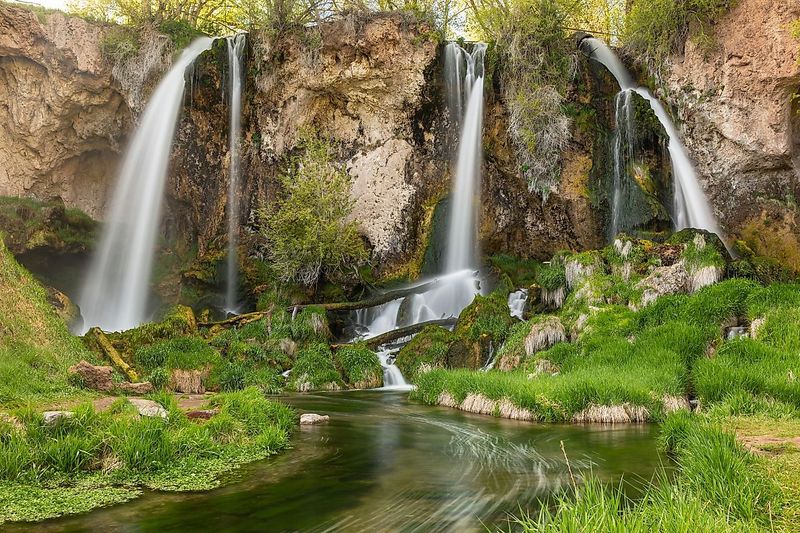
This hidden gem features a rare triple waterfall where three separate cascades pour over a limestone cliff in a lush, green setting. The falls drop about 70 feet into a pool surrounded by caves that you can actually explore.
Limestone caverns behind and beside the falls let you walk through cool, dripping chambers and see the waterfalls from behind. The park stays surprisingly uncrowded compared to more famous Colorado destinations. Fishing, camping, and easy hiking trails make this a perfect family destination.
Visit in spring when snowmelt makes the falls most powerful, or in fall when the surrounding cottonwoods turn golden and the crowds thin out even more.
23. Fourteener Summit Hike
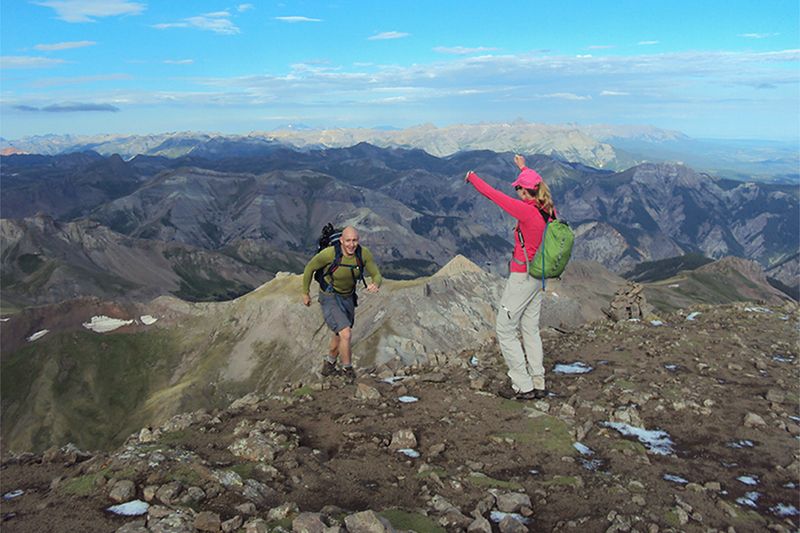
Colorado boasts 58 peaks over 14,000 feet elevation, locally called “fourteeners,” and summiting one is a rite of passage for mountain lovers. Each peak offers its own challenges and rewards, from relatively gentle hikes to technical climbs requiring ropes and experience.
Quandary Peak and Mount Bierstadt are popular first fourteeners because of their accessible trails. Standing on a summit where you can see for a hundred miles in every direction creates an indescribable feeling of accomplishment. The thin air and high elevation make even moderate hikes feel challenging.
Start before dawn to avoid dangerous afternoon thunderstorms, bring layers for rapidly changing weather, and know your limits because altitude affects everyone differently.
24. Estes Park Elk Watching

Each fall, hundreds of elk descend into Estes Park for their annual mating season, creating one of the most impressive wildlife spectacles in Colorado. Bull elk bugle a haunting, high-pitched call to attract females and challenge rivals, filling the mountain air with prehistoric sounds.
You can watch massive bulls with enormous antler racks square off in dominance displays right in town parks and golf courses. The rut peaks in late September and early October when testosterone-fueled bulls become bold and unpredictable. Rangers and volunteers help keep visitors safe while observing these powerful animals.
Stay at least 25 yards away from elk because bulls during rut can be aggressive and dangerous despite seeming calm and used to people.
25. Steamboat Springs Hot Springs
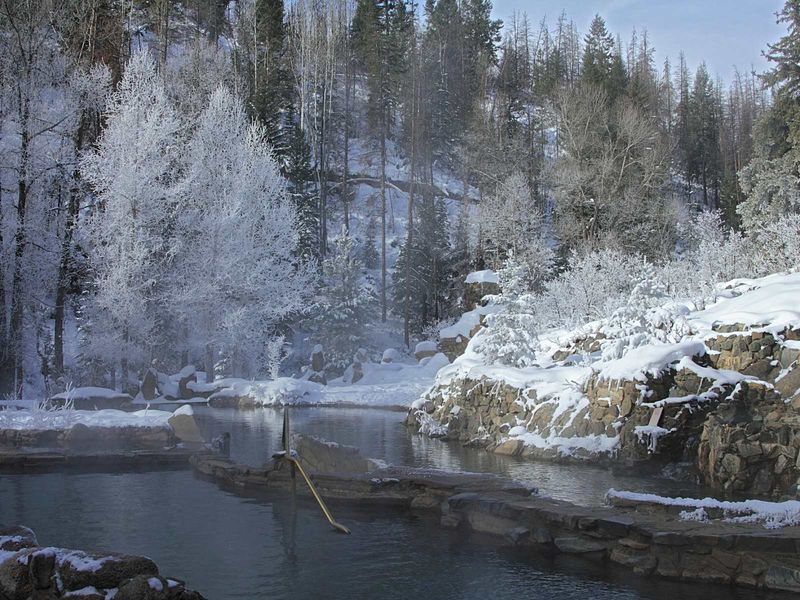
Steamboat Springs earned its name from the sound of a now-silent hot spring, but the area still has numerous springs perfect for soaking tired muscles. Old Town Hot Springs in downtown offers multiple pools with varying temperatures, waterslides, and lap swimming.
Strawberry Park Hot Springs, located up a rough road outside town, provides a more natural experience with rock pools tucked into the forest. The mineral-rich water reaches 104 degrees and feels especially magical when snow falls around you. After a day of skiing or hiking, nothing beats sinking into these therapeutic waters.
Strawberry Park requires swimsuits during the day but becomes clothing-optional after dark, so plan your visit according to your comfort level and preferences.
26. Million Dollar Highway
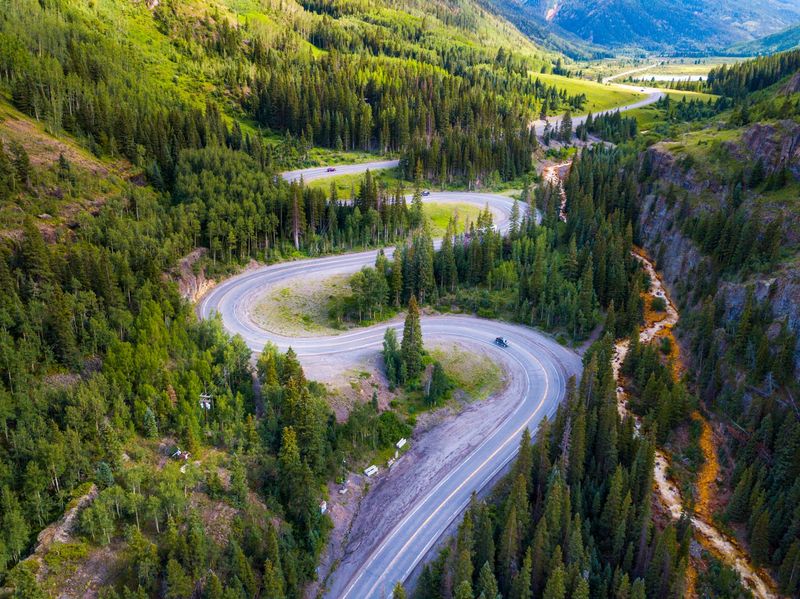
This 25-mile stretch of highway between Ouray and Silverton ranks among the most scenic and nerve-wracking drives in America. The road clings to mountainsides with no guardrails, hairpin turns, and thousand-foot dropoffs that make passengers grip their seats.
Despite the white-knuckle moments, the views are absolutely spectacular, passing through Red Mountain Pass at 11,018 feet elevation. Historic mining structures dot the hillsides, and waterfalls cascade down cliff faces. The highway got its name either from the cost to build it or the gold ore in the roadbed, depending on which story you believe.
Drive north from Silverton to Ouray so the driver stays on the inside lane away from the cliff edges for a slightly less stressful experience.



